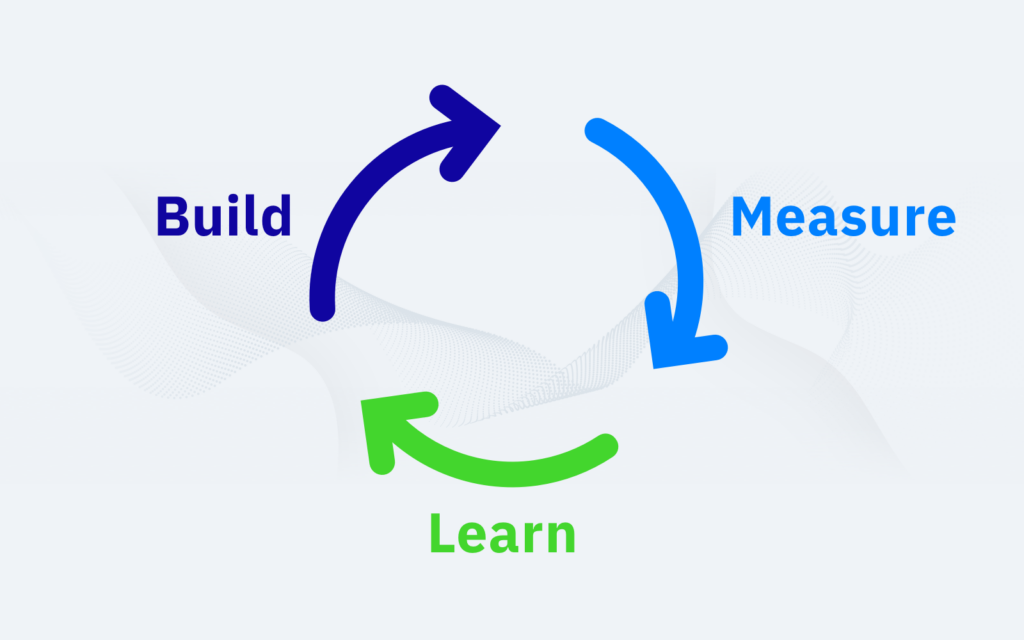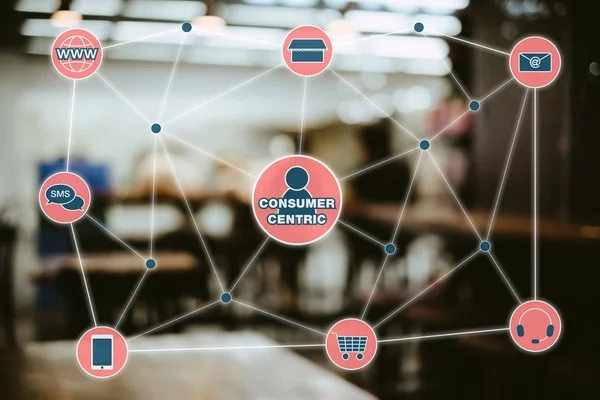
Have a fantastic business idea buzzing in your head? Maybe you dream of creating a revolutionary app, launching a unique clothing line, or offering a problem-solving service in your community. But the fear of failure and the hefty costs associated with traditional startups might be holding you back.
Here’s where the Lean Startup Methodology comes in! This approach is all about launching your business idea quickly, testing it with real customers, and iterating (making improvements) based on their feedback – all without breaking the bank. Think of it as a scientific experiment for your business idea!
This article dives deep into the Lean Startup Methodology, explaining its core principles, benefits, and how you can implement it to turn your innovative concept into a thriving startup.
The Startup Struggle: Why Traditional Methods Don’t Always Work
Traditionally, startups would spend months, or even years, developing a product or service based on assumptions about what customers might want. They’d invest heavily in resources, launch with a big bang, and then hope for the best. Unfortunately, this approach often leads to disappointment – the product might not resonate with the target audience, leading to wasted time, money, and effort.
What Is Lean Startup Methodology? Embrace Experimentation
The Lean Startup Methodology flips this traditional approach on its head. Here’s the core idea:
- Start with a Minimum Viable Product (MVP): Instead of building a fully-fledged product, create a basic, stripped-down version with just enough features to validate your core concept. This MVP should be functional enough to get feedback from real customers.
- Validate Your Assumptions: The goal isn’t to build the perfect product right away. It’s to test your assumptions and see if there’s a real market need for your idea. Release your MVP to a small group of potential customers and gather their feedback.
- Embrace the Build-Measure-Learn Feedback Loop: Based on the feedback from your MVP, iterate and improve your product. This continuous cycle of building (creating an MVP), measuring (gathering customer feedback), and learning (using that feedback to improve) is the heart of the Lean Startup Methodology.

Think of it like this: Imagine you’re baking a cake for the first time. You wouldn’t throw in all the ingredients and hope for the best, right? You’d start with a small test batch, taste it, adjust the recipe based on the results, and then bake a full cake. The Lean Startup Methodology follows a similar approach for building businesses!**
The Benefits of Going Lean: Why You Should Consider This Approach
Here are some compelling reasons to embrace the Lean Startup Methodology:
- Reduced Risk of Failure: By launching with an MVP and testing your idea early on, you minimize the risk of investing heavily in a product that nobody wants.
- Faster Product Development: The Lean approach allows for rapid iteration based on customer feedback. This means you can bring your product to market quicker and adapt to changing needs faster than traditional methods.
- Save Money and Resources: Focusing on an MVP minimizes upfront costs. You can invest more resources in refining your product only after you’ve validated its potential.
- Customer-Centric Development: The Lean Startup Methodology emphasizes gathering real customer feedback. This ensures you’re building a product or service that actually solves a problem people face.

- Increased Learning and Agility: The build-measure-learn loop fosters a culture of continuous learning and adaptation. You’ll be constantly learning from your customers and refining your product based on their needs.
Putting the Lean Startup Methodology into Action: A Step-by-Step Guide
Ready to unleash your inner entrepreneur and bring your idea to life using the Lean Startup Methodology? Here’s a roadmap to guide you:
-
Define Your Business Idea and Target Audience:
- What problem are you trying to solve?
- Who is your ideal customer? Understanding your target audience is crucial for creating a product or service that resonates with them.
-
Develop Your Minimum Viable Product (MVP):
- Focus on the core features that will validate your core concept. Don’t get bogged down trying to build a perfect product from the start.
- Your MVP could be a simple website landing page with a signup form, a prototype app, or a basic physical product.

-
Identify Your Success Metrics:
- How will you measure the success of your MVP? This could be website traffic, user signups, app downloads, or sales conversions.
-
Launch Your MVP and Gather Feedback
- Get your MVP out there in front of your target audience. This could involve sharing it with friends, family, joining relevant online communities, or running targeted ads on social media.
- Encourage users to provide feedback through surveys, interviews, or even social media comments.
-
Analyze the Data and Learn:
- Did your MVP resonate with your target audience? Did it validate your initial assumptions about the problem you’re trying to solve?
- Analyze the data you collected from your success metrics and user feedback.
-
Build-Measure-Learn Feedback Loop:
- Here’s where the magic happens! Based on the feedback from your MVP, iterate and improve your product. This could involve adding new features, removing features that users don’t find valuable, or even pivoting your business idea entirely if the market response is weak.
- Release a new version of your product (ideally another MVP) that incorporates the learnings from the previous iteration.
- Gather more feedback, analyze the data, and continue iterating through the build-measure-learn loop.
Also Read: What Is The Premise Behind Influencer Marketing? A Comprehensive Guide
Remember, the Lean Startup Methodology is an ongoing process. There’s no finish line! The goal is to continuously learn from your customers and adapt your product or service to better meet their needs.
Lean Startup Tools and Resources to Fuel Your Entrepreneurial Journey
The good news is you don’t have to go it alone! There are many tools and resources available to help you implement the Lean Startup Methodology:
- Landing Page Builders: Platforms like Wix https://www.wix.com/ and Squarespace https://www.squarespace.com/ allow you to create simple and effective landing pages to showcase your MVP and collect user feedback.
- Survey Tools: SurveyMonkey https://www.surveymonkey.com/ and Google Forms https://www.google.com/forms/about/ are great tools to gather feedback from users through surveys and questionnaires.
- Project Management Tools: Trello https://trello.com/ and Asana https://asana.com/ can help you manage your project workflow, track tasks, and collaborate with team members effectively.
- Lean Startup Books and Resources: Eric Ries’ book “The Lean Startup” is a must-read for aspiring entrepreneurs. Several online resources and communities offer valuable insights and support for those embracing the Lean Startup Methodology.
By leveraging these tools and staying committed to the build-measure-learn loop, you’ll be well on your way to transforming your innovative idea into a successful startup!
The Lean Startup Mindset: Essential Traits for Aspiring Entrepreneurs
The Lean Startup Methodology isn’t just about tools and strategies. It’s also about cultivating a particular mindset:
- Embrace Validation over Assumption: Don’t be afraid to test your ideas and be willing to change course based on customer feedback.
- Focus on Continuous Learning: Be an avid learner, constantly seeking to understand your customers and market trends.

- Develop a Growth Mindset: View challenges as opportunities to learn and improve.
- Be Agile and Adaptable: Be prepared to pivot your strategy and adjust your product based on new information.
- Embrace Customer Centricity: Put your customers at the heart of everything you do. Their needs and feedback should guide your product development process.
Also Read: What Is SWOT Analysis And How Does It Work?: A Comprehensive Guide
By adopting these qualities and the core principles of the Lean Startup Methodology, you’ll increase your chances of success in the exciting world of startups!
So, what are you waiting for? Grab your innovative idea, embrace the Lean Startup approach, and embark on your entrepreneurial journey today! Remember, the road to success is paved with learning, adaptation, and a relentless focus on creating value for your customers. Good luck!
Unveiling the Lean Startup Methodology – FAQ
The Lean Startup Methodology might sound complex, but it’s all about building a business based on customer feedback and continuous improvement. Here are some frequently asked questions to help you understand this approach better:
- Isn’t the Lean Startup Methodology just a fancy way of saying ‘release a product quickly and hope for the best’?
Not quite! While speed is a factor, the core principle is validated learning. You release a Minimum Viable Product (MVP) to test your assumptions and gather feedback, not just launch a full-fledged product with crossed fingers. The Lean methodology emphasizes using this feedback to iterate and improve your product before fully scaling it up.
- Do I need a team of developers to implement the Lean Startup Methodology?
Not necessarily! The beauty of Lean Startup is its adaptability. Depending on your idea, you might be able to create a basic MVP yourself using online tools like website builders or simple prototyping apps. If your idea requires more complex development, you can look for co-founders with the necessary skills or consider outsourcing specific tasks.
- What if my MVP flops? Does that mean my business idea is a failure?
An MVP that doesn’t gain traction doesn’t necessarily mean your entire idea is a failure. It just means you need to go back to the drawing board and refine your concept based on the feedback you received. The Lean Startup approach encourages you to see these situations as learning opportunities, not setbacks.
- How can I identify the right metrics to track the success of my MVP?
The specific metrics will depend on your business idea. For example, if you’re launching a new app, you might track app downloads, user engagement time, or conversion rates (percentage of users who take a desired action within the app). Focus on metrics that tell you if your MVP is achieving its core objective and resonating with your target audience.
- How do I know when it’s time to pivot my business idea based on feedback?
There’s no one-size-fits-all answer. If the feedback consistently indicates that your MVP doesn’t address a real need or that there’s no market interest, it might be time to consider a significant change in direction. However, don’t be afraid to experiment and iterate on your initial concept before completely abandoning it.
- Isn’t the Lean Startup Methodology just for tech startups? Can it be applied to other industries?
Absolutely! The core principles of Lean Startup – focusing on customer needs, building an MVP, and iterating based on feedback – can be applied to businesses of all kinds. Whether you’re launching a new restaurant concept, a local service like dog walking, or even a creative product like handmade jewelry, the Lean approach can help you validate your idea and build a successful business.
- How can I stay motivated throughout the Lean Startup process?
The entrepreneurial journey can be challenging. Surround yourself with positive and supportive people who believe in your idea. Celebrating small wins and milestones along the way can keep you motivated. Most importantly, remember your passion for your idea and the impact you hope to create.
- Where can I find a community of Lean Startup enthusiasts?
There are many online communities and forums dedicated to the Lean Startup Methodology. You can also attend workshops, conferences, or meetups focused on entrepreneurship to connect with like-minded individuals and gain valuable insights.
- Are there any famous examples of companies that used the Lean Startup Methodology?
Several successful companies today credit the Lean Startup approach for their growth. Dropbox, Groupon, and Airbnb are just a few examples of businesses that started with a simple MVP, gathered user feedback, and iterated their product based on that feedback to achieve remarkable success.
- The Lean Startup Methodology sounds interesting, but where do I even begin?
Start by clearly defining your business idea and your target audience. Then, brainstorm what your MVP could look like – it could be a website landing page, a prototype app, or even a physical product sample. Get your MVP out in front of potential customers, gather feedback, and be prepared to learn and iterate! Remember, the Lean Startup journey is a continuous learning process, and there’s no shame in adapting your approach as you go.

